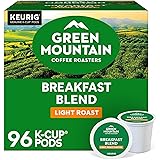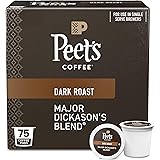Achieving a café-quality cappuccino at home, even without a dedicated espresso machine, is entirely possible. The accompanying video by European Coffee Trip provides excellent guidance on this very topic, demonstrating how simple tools can yield impressive results. This article expands upon the video’s insights, offering a deeper dive into the nuances of crafting a delicious homemade cappuccino, ensuring every step is understood and mastered.
The journey to a perfect homemade cappuccino involves thoughtful consideration of both coffee and milk. Understanding the fundamental properties of these ingredients and how to manipulate them with basic equipment allows for remarkable outcomes. Our focus here will be on demystifying the process, making it accessible for anyone eager to elevate their home coffee experience.
The Foundation: Crafting Espresso-Strength Coffee at Home
The Espresso Dilemma: Understanding Brew Strength
True espresso is renowned for its high concentration, typically containing between 7 and 12% coffee in the total brew. This is a stark contrast to filter-style coffee, which usually falls in the range of 1.2 to 1.8%. Espresso machines achieve this intensity through a unique combination of factors: applying high pressure to extract coffee rapidly and utilizing a tight brew ratio, often between 1:2 and 1:3 coffee to water. This concentrated extraction is what gives espresso its distinctive flavor and body, making it ideal for mixing with milk.
Without an espresso machine, replicating these precise conditions becomes a creative challenge. The absence of high pressure means alternative methods must be employed to boost coffee strength. This involves a strategic adjustment of several variables that influence extraction, ensuring a robust coffee foundation for your homemade cappuccino.
The French Press Solution: A Home Brewer’s Ally
A standard French press, a common fixture in many home kitchens, proves to be an exceptionally versatile tool for brewing espresso-strength coffee. To compensate for the lack of pressure, adjustments are made to the brew ratio and extraction parameters. These include grinding the coffee finer, introducing agitation during brewing, increasing the water temperature, and extending the overall extraction time.
The video showcases a very effective French press recipe designed for this purpose: 30 grams of coffee are ground to a fine consistency, equivalent to about 16 clicks on a Comandante grinder. This fine grind dramatically increases the coffee’s surface area, allowing for greater contact with water. Next, 100 ml of hot water, ideally at 98°C, is added. Agitation, by stirring for 20 to 30 seconds, ensures even saturation and promotes efficient extraction of soluble compounds from the coffee grounds. The mixture is then allowed to steep for a total of 4 minutes and 30 seconds before the plunger is pressed down. This method typically yields 30 to 35 grams of concentrated coffee, closely mimicking the strength needed for a cappuccino.
Selecting Your Beans: The Heart of Your Homemade Cappuccino
The quality of your final cappuccino is heavily reliant on the coffee beans chosen. Freshly roasted coffee is always paramount, as it ensures optimal flavor and aroma. When making a cappuccino at home, selecting coffee from an “espresso roast category” is often a wise choice. These coffees are typically roasted to a darker degree, developing deeper, more soluble sugars and reducing acidity, which helps them stand up to milk.
Crucially, one should look for coffee with a “higher body.” This term refers to the mouthfeel and perceived weight of the coffee, its texture on the palate. A coffee with higher body will not be lost when diluted with milk; instead, its inherent richness and flavor notes will be able to cut through the milk’s sweetness and creaminess. The video features a Colombian coffee from Finca Buena Vista, owned by Carlos Imbachi and roasted by Doubleshot in Prague. It is described with notes of plums, sugarcane, and lemongrass, characteristics that offer a delightful sweetness and complexity when paired with milk, enhancing the overall cappuccino experience rather than being overpowered by it.
The Creamy Component: Mastering Milk for Cappuccino
Choosing the Right Milk
Just as much attention should be paid to the milk as to the coffee. The ideal choice for a homemade cappuccino is fresh, full-fat milk that is delicious on its own. Full-fat milk contains an optimal balance of proteins and fats, which are crucial for creating stable and velvety microfoam. The proteins denature and reform around air bubbles, while the fats contribute to the smooth texture and rich mouthfeel.
While full-fat dairy milk is often preferred, various plant-based milks have also been developed to perform well in coffee applications. Oat milk, for instance, is a popular alternative due to its creaminess and ability to froth nicely. Soy and almond milks can also be frothed, though their protein and fat structures may require different techniques to achieve a comparable microfoam quality.
The Science of Heating Milk
Heating milk to the correct temperature is a critical step in cappuccino preparation. The desired range is typically between 60 and 70 degrees Celsius. Exceeding 68 to 70 degrees Celsius can significantly compromise the milk’s taste, often resulting in a “cooked” or burnt flavor due to the denaturation of milk sugars and proteins. This overheating also makes it considerably more challenging to create the desirable microfoam texture, as the milk proteins become less pliable.
For convenience, a microwave oven can be used to heat the milk. As demonstrated in the video, 150 ml of milk can be heated for approximately 40 seconds to reach the optimal temperature. Alternatively, milk can be heated on a stovetop over medium-low heat, with a thermometer used to monitor the temperature precisely. Careful attention to this detail ensures the milk contributes its natural sweetness and creamy texture without any off-notes.
Frothing Fundamentals: Creating Microfoam Without a Steamer
The goal of frothing milk for cappuccino is to transform it into “microfoam”—a velvety, silky texture composed of tiny, integrated air bubbles. This is distinct from stiff, dry foam often produced by less controlled methods. While a dedicated steam wand achieves this effortlessly, several home tools can mimic the effect. A small French press, a cocktail shaker, or even a kitchen mixer can be employed to create the desired milk structure.
The Bodum Chambord milk frother, or a regular French press, is particularly effective. The technique involves a two-stage process. The initial stage focuses on “stretching” the milk by introducing air: three to five gentle presses are performed, with the plunger breaking the surface of the milk. This action incorporates air, increasing the milk’s volume. The second stage, known as “texturing,” involves 15 to 20 presses where the plunger remains submerged within the milk. This action folds the introduced air throughout the milk, breaking larger bubbles into smaller ones and creating the smooth, consistent microfoam essential for a proper cappuccino. This method ensures the foam is well-integrated with the liquid milk, providing a superior mouthfeel and taste.
The Art of the Pour: Bringing It All Together
Combining the expertly brewed coffee with the perfectly frothed milk is the final, satisfying step in crafting your homemade cappuccino. While direct pouring from the frother is an option, using a dedicated pouring pitcher offers greater control, especially if there is an interest in practicing latte art. Many tutorials on YouTube exist for those looking to develop their latte art skills, demonstrating various techniques and patterns.
The pouring process for latte art is fundamentally divided into two stages. The initial stage involves pouring more milk into the coffee, holding the pitcher slightly higher, and allowing the milk to gently mix beneath the surface. This integrates the coffee and milk, creating the rich base of the cappuccino. The second stage requires bringing the pitcher closer to the cup and pouring in a controlled manner, allowing the denser microfoam to settle on top and create patterns. This meticulous approach ensures a beautiful presentation alongside a delicious taste, making your homemade cappuccino a truly professional-looking beverage.
Elevate Your Home Coffee Experience
The ability to make cappuccino at home, bypassing the need for an expensive espresso machine, opens up a world of experimentation and enjoyment. By focusing on quality ingredients—freshly roasted, high-body coffee and full-fat milk—and mastering the techniques of brewing strong coffee and frothing milk, exceptional results are consistently within reach. Embrace the process, adjust to your taste, and discover the immense satisfaction of crafting your perfect homemade cappuccino.







